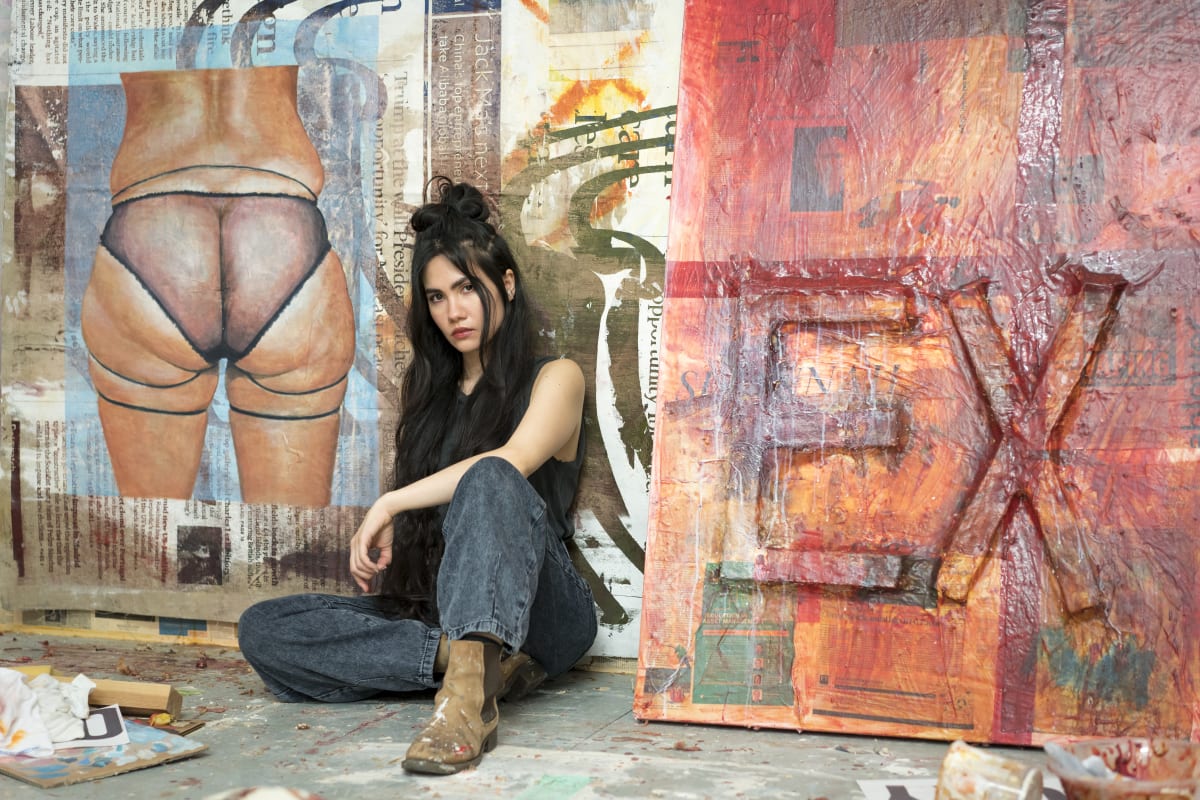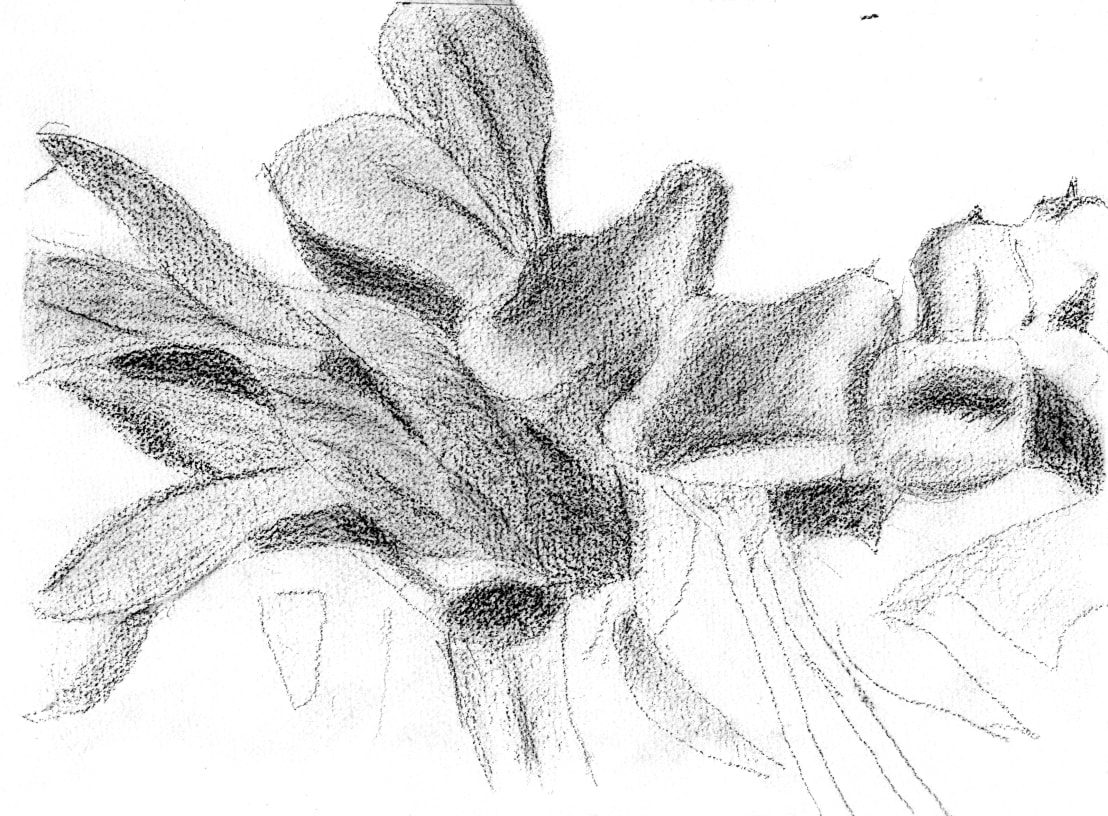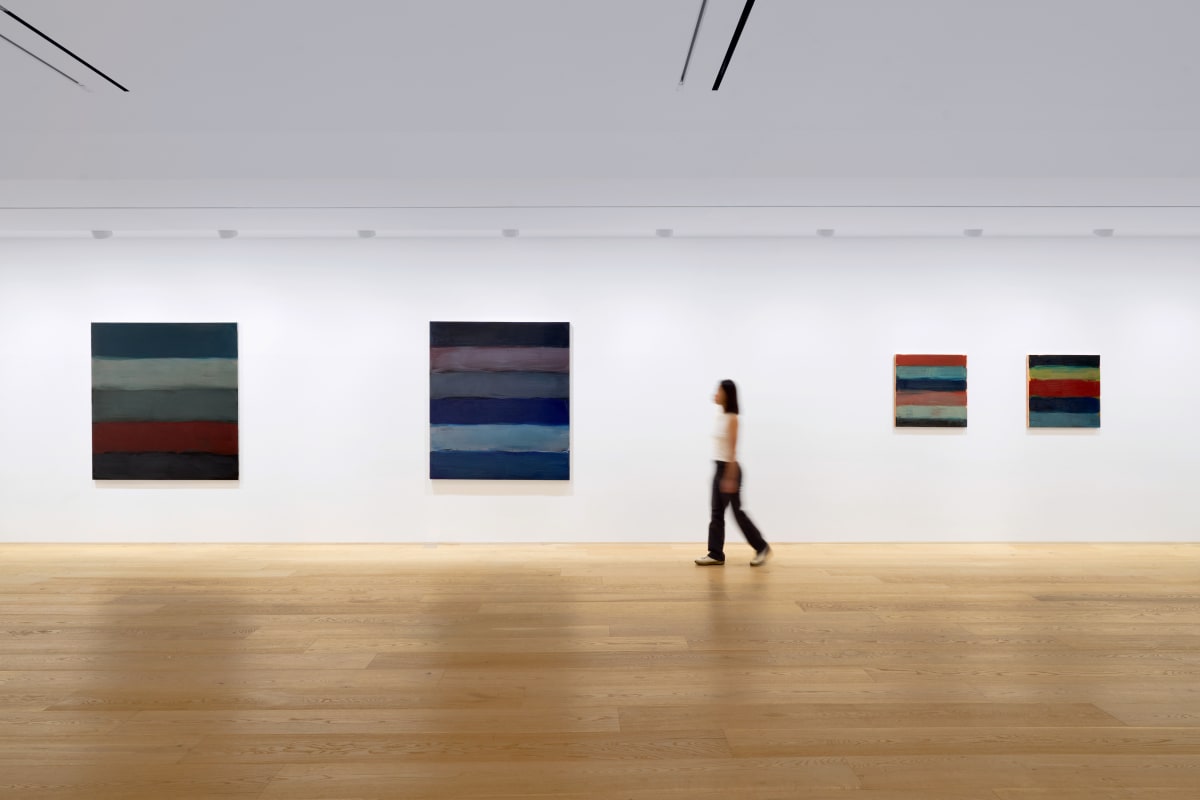The possibilities of painting: Mandy El-Sayegh and Thaddaeus Ropac
By Chloë Ashby
In 2017 Thaddaeus Ropac opened an outpost of his gallery in London. Spread through a five-story mansion in Mayfair, the space is one of half a dozen under the gallery’s name. Together with the newest member of the team, Julia Peyton-Jones, the former director of the Serpentine Galleries, Ropac was considering the possibilities of painting today. ‘We were interested in artists who were using the practice of painting and really pushing it forward,’ he says from Salzburg. ‘We had a lot of artists on our list, so it took time. But the first studio I visited was Mandy’s.’
Mandy El-Sayegh, who was born in Malaysia in 1985 and is based in London, creates paintings, vitrines, installations, performances, and video art comprising thin layers of paint and collaged text and images. ‘I call myself a painter if I want to legitimize myself,’ says the artist, smiling. ‘It’s the most solid thing. But really installation and performance can be anything, anywhere.’ She is speaking from her studio, surrounded by pages of printed and handwritten material. Cut from their original context, these snippets of newspapers, journals, maps, adverts, and anatomy books take on new meaning. For El-Sayegh, gathering them is a way of processing information. ‘I treat text as a material,’ she adds. ‘It’s pliable and gloopy – like paint.’
There’s a fleshliness to El-Sayegh’s painted surfaces, which she refers to as ‘skins.’ Though she went against her family’s wishes when she chose to study art – ‘My family are into medicine, logic, maths’ – her work is about the human body. She likes to incorporate the Financial Times because of the flesh-pink tone of its pages. Rather than collage, she refers to the sticking together of those pages as ‘suture’ – a medical term for the stitching of flesh. In her site-specific installations, she plasters texts onto the walls and floor with latex. ‘I’ll always go to my microscope if I have a block,’ she adds, ‘to look at form.’ Her work is physical and visceral – ‘a surgery of different parts.’
Ropac remembers clearly his first meeting with El-Sayegh and how excited he was by the way she was pushing the boundaries: In her hands, a painting isn’t simply a work on a wall but a part of that wall, or something to be stepped on, rolled out like carpet on the floor. For El-Sayegh, Ropac offered security and comfort at a time of physical and emotional upheaval. ‘I was being kicked out of my studio and I was in a bad headspace,’ she says. ‘Thaddaeus made me feel seen and heard. The whole team embraced me. It felt like a sanctuary.’
El-Sayegh’s first exhibition with the gallery was a group show in 2020. The result of Ropac and Peyton-Jones’s research, ‘A Focus on Painting’ brought together four painters at different stages in their careers who approach the medium in new and exciting ways. Along with Alvaro Barrington, Rachel Jones, and Dona Nelson, El-Sayegh had a room of her own in which to explore what painting could be. Covering the floor were silkscreened pages from newspapers and scraps of text from her father’s diaries. On the walls were works from her ‘Net-Grid’ series (2010-), which took what was on the floor and overlaid it with delicate, Agnes Martin-esque grids.
‘We currently have a show in one of our Paris galleries called “Saturation”,’ Ropac says. ‘We invited eight women artists to participate and Mandy responded by occupying and redefining the space.’ After covering three walls with her signature silkscreened newsprints, El-Sayegh hung one painting on a wall and installed another on the floor, which became a shallow viewing platform of sorts. ‘It changes the angle from which you see the work and draws you in – it makes you feel more involved.’
‘To me, it’s an exploded cell,’ says El-Sayegh, who in her performance work explores how the body moves and makes itself known in regulated spaces. The ‘platform’ that Ropac refers to is roughly the size of a solitary confinement cell – a nod to societal restrictions. ‘Running through all my performances are questions about access, legibility, and legitimacy,’ El-Sayegh adds. ‘What makes you legitimate in a high art context? It’s painting. But what is a painting? To me it’s a smearing.’
Conscious of straddling two very different worlds – the commercial artworld in Mayfair and the world she grew up in, with a father from Gaza and a mother from a small village in Malaysia – El-Sayegh wants to make work that recognizes disparities and that oscillates. ‘This jump in a generation is so violent, I have to acknowledge it in my practice,’ she says. She also has to trust her gallery. ‘It’s very sensitive,’ Ropac says of the relationship between artist and gallerist. ‘Each artist exists in their own universe and has different needs, and what we as a team try to do is understand them. So the relationship varies, but what we’re always trying to do is long-term career building – it’s not just about mounting a show, which is almost the easy part.’
The space for El-Sayegh’s forthcoming presentation at the Pompidou Center in Paris is unlike any she has filled before: It’s more traditional, and dark and dramatic, with a stage and an auditorium. Featured as part of the Move festival, the performance is a collaboration with the choreographer Alethia Antonia and the composer Lily Oakes, with whom she worked for the London Gallery Weekend earlier this year. The piece will see El-Sayegh take on a passive role as a painter figure, blurring surfaces, while other more active bodies move around the interior. There will be a painted installation on the floor and possibly a projection of bodies superimposed onto a grid. ‘As with all my performances, I want it to feel like you’re in the head of someone who’s experiencing confinement in some way,’ El-Sayegh says. ‘So I’m still thinking about what spaces mean to people and who can access them, and what a painting gesture is.’
It’s fitting that Ropac’s protégé is showing in the most prestigious contemporary art museum in Paris. After all, the city has long been a key hub for his gallery. Seven years after founding Galerie Thaddaeus Ropac in Salzburg in 1983, Ropac expanded to the Marais, a short walk from the Pompidou Center; in 2012 he opened a second Paris space in a former boiler factory on the northeast fringes of the city. ‘Paris was where every artist wanted to be at the beginning of the last century, then New York took over,’ he says. ‘The beginning of this century was dominated by London, with its artists, studio spaces, and international museums. Tate Modern changed everything.’ Now, however, Ropac believes Paris is regaining what it lost. ‘Brexit played a big role, but also Paris was ready and had been upgraded with new institutions such as the Fondation Louis Vuitton and the Bourse de Commerce.’
What’s next for the gallery? ‘We do have plans and we’re working on them, but for now we’ll have to keep the next step as a surprise,’ Ropac says, with a glint in his eye. As for El-Sayegh, beyond her performance at the Pompidou Center, she hopes to continue to make work that people can access and experience, no matter which world they come from. ‘Work that gives people a feeling of being in it and getting it and being a part of it.’
Festival Move, ‘Culture club – Corps collectifs’
October 6 – 23, Centre Pompidou, Paris
Mandy El-Sayegh work is currently on view in group show ‘Saturation’ at Thaddaeus Ropac Paris Pantin, until September 24, 2022.
Chloë Ashby is an author and award-winning arts journalist based in London. Her first novel, Wet Paint, was published in April 2022.
Caption for full-bleed images, top to bottom:
Mandy El-Sayegh, Four Species (installation detail), 2019, Biennale Matter of Art, Prague, 2022. Photograph by Jonáš Verešpej. Courtesy of the artist and Biennale Matter of Art, Prague.
Mandy El-Sayegh, studio detail, 2021. Photograph by Damian Griffiths, courtesy of the artist and Galerie Thaddaeus Ropac, London, Paris, Salzburg, Seoul.
Installation view of Mandy El-Sayegh's exhibition ‘Figure One’, Galerie Thaddaeus Ropac, Paris, 2021-2022. Photograph by Charles Duprat. Courtesy of the artist and Thaddaeus Ropac, London, Paris, Salzburg, Seoul.
Installation view of Mandy El-Sayegh's Four Species’ (2022), Biennale Matter of Art, Prague, 2022. Photograph by Jonáš Verešpej. Courtesy of the artist and Biennale Matter of Art, Prague.


















































































































































































